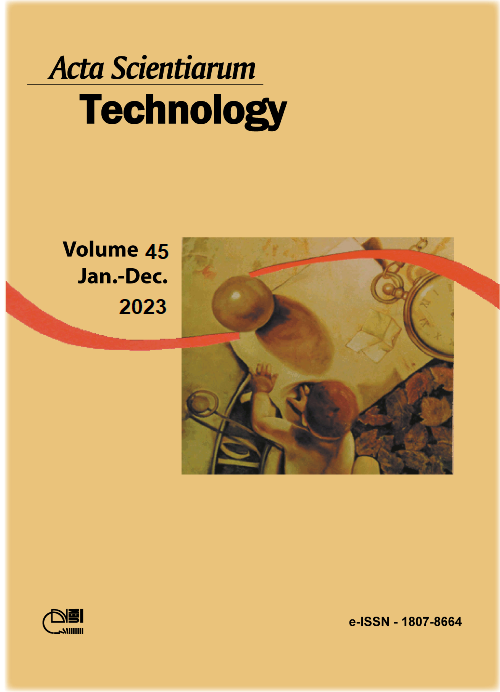Goldenberry powder processing: analysis by a response surface methodology
DOI:
https://doi.org/10.4025/actascitechnol.v45i1.60695Palavras-chave:
cape gooseberry; fruit powder; carotenoids; optimization; desirability; central composite designResumo
Goldenberry (Physalis peruviana) is a fruit of great interest for its nutritional properties and bioactive compounds, such as carotenoids. This study aimed to determine the ideal conditions for the development of a goldenberry powder. A Central Composite Design (CCD) was adopted to obtain response surfaces. For processing, different temperatures (50 - 70ºC) and times (27.18 - 32.82 hours) were used for dehydration of the fruits, evaluating the content of total carotenoids as a response and the moisture content around 15%. Data obtained were tested by analysis of variance (ANOVA) and fitted to a second-order polynomial equation using multiple regression analysis. An optimization study was carried out and the desirability function methodology was applied to find the ideal process condition. The optimization was determined at 52ºC and in a time of 27.18 hours, in which the experimental value obtained for total carotenoids was 12656.5 ± 527.22 mg 100 g-1 and moisture content of 15.00 ± 0.26%. In this condition, the global desirability value was 1.000 and the experimental values agreed with the predicted ones. Second-order polynomials were able to predict the carotenoids content in goldenberry powder, as well as the moisture content of the powder. The CCD and response surface tools were effective in optimizing the process. The production of goldenberry powder under these experimental conditions represents a viable alternative for adding value to the fruits, enabling the production of a potential food ingredient with carotenoid retention.
Downloads
Referências
Downloads
Publicado
Como Citar
Edição
Seção
Licença
DECLARAÇíO DE ORIGINALIDADE E DIREITOS AUTORAIS
Declaro que o presente artigo é original, não tendo sido submetido í publicação em qualquer outro periódico nacional ou internacional, quer seja em parte ou em sua totalidade.
Os direitos autorais pertencem exclusivamente aos autores. Os direitos de licenciamento utilizados pelo periódico é a licença Creative Commons Attribution 4.0 (CC BY 4.0): são permitidos o compartilhamento (cópia e distribuição do material em qualqer meio ou formato) e adaptação (remix, transformação e criação de material a partir do conteúdo assim licenciado para quaisquer fins, inclusive comerciais.
Recomenda-se a leitura desse link para maiores informações sobre o tema: fornecimento de créditos e referências de forma correta, entre outros detalhes cruciais para uso adequado do material licenciado.















